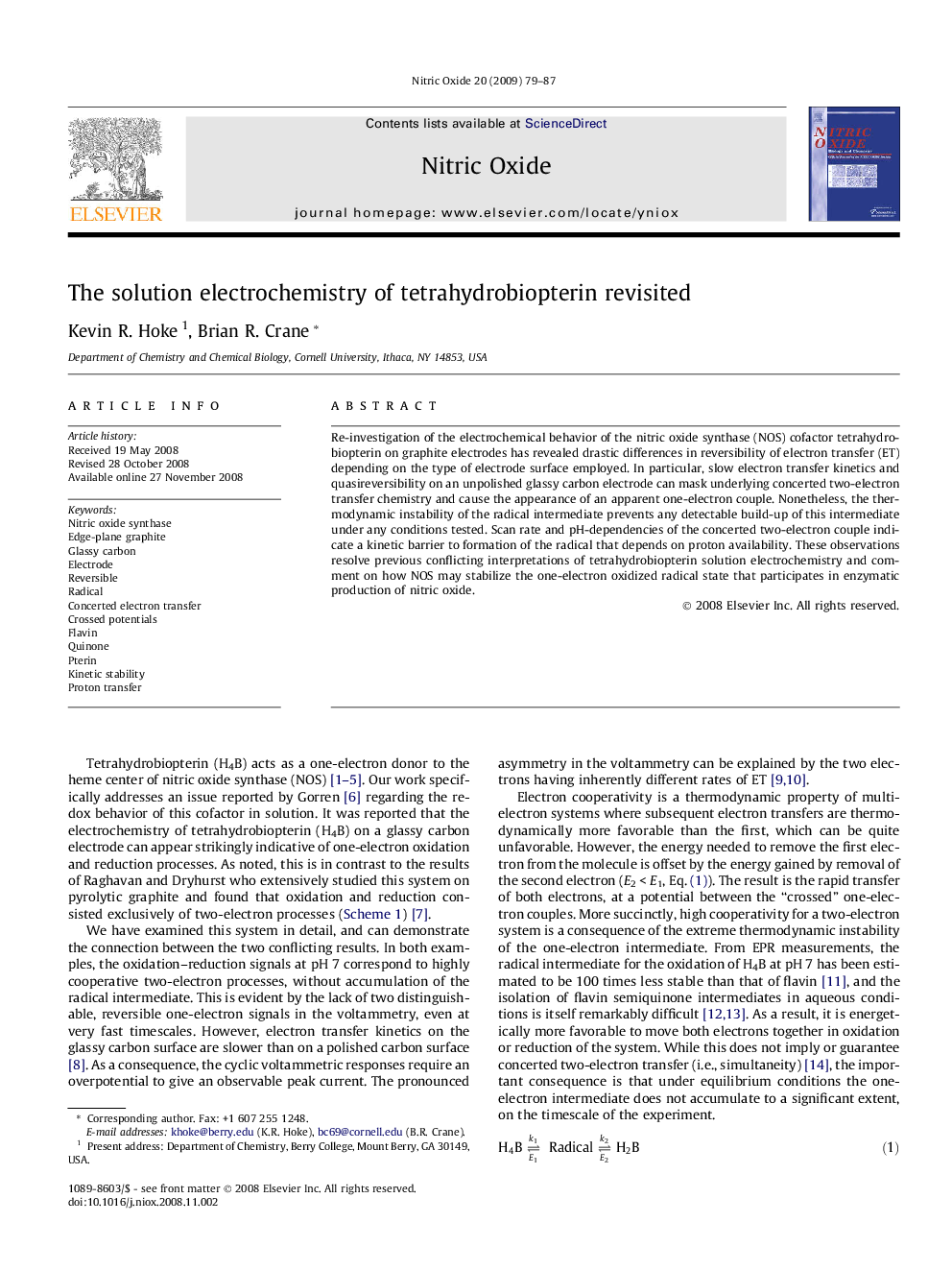| Article ID | Journal | Published Year | Pages | File Type |
|---|---|---|---|---|
| 2001590 | Nitric Oxide | 2009 | 9 Pages |
Re-investigation of the electrochemical behavior of the nitric oxide synthase (NOS) cofactor tetrahydrobiopterin on graphite electrodes has revealed drastic differences in reversibility of electron transfer (ET) depending on the type of electrode surface employed. In particular, slow electron transfer kinetics and quasireversibility on an unpolished glassy carbon electrode can mask underlying concerted two-electron transfer chemistry and cause the appearance of an apparent one-electron couple. Nonetheless, the thermodynamic instability of the radical intermediate prevents any detectable build-up of this intermediate under any conditions tested. Scan rate and pH-dependencies of the concerted two-electron couple indicate a kinetic barrier to formation of the radical that depends on proton availability. These observations resolve previous conflicting interpretations of tetrahydrobiopterin solution electrochemistry and comment on how NOS may stabilize the one-electron oxidized radical state that participates in enzymatic production of nitric oxide.
